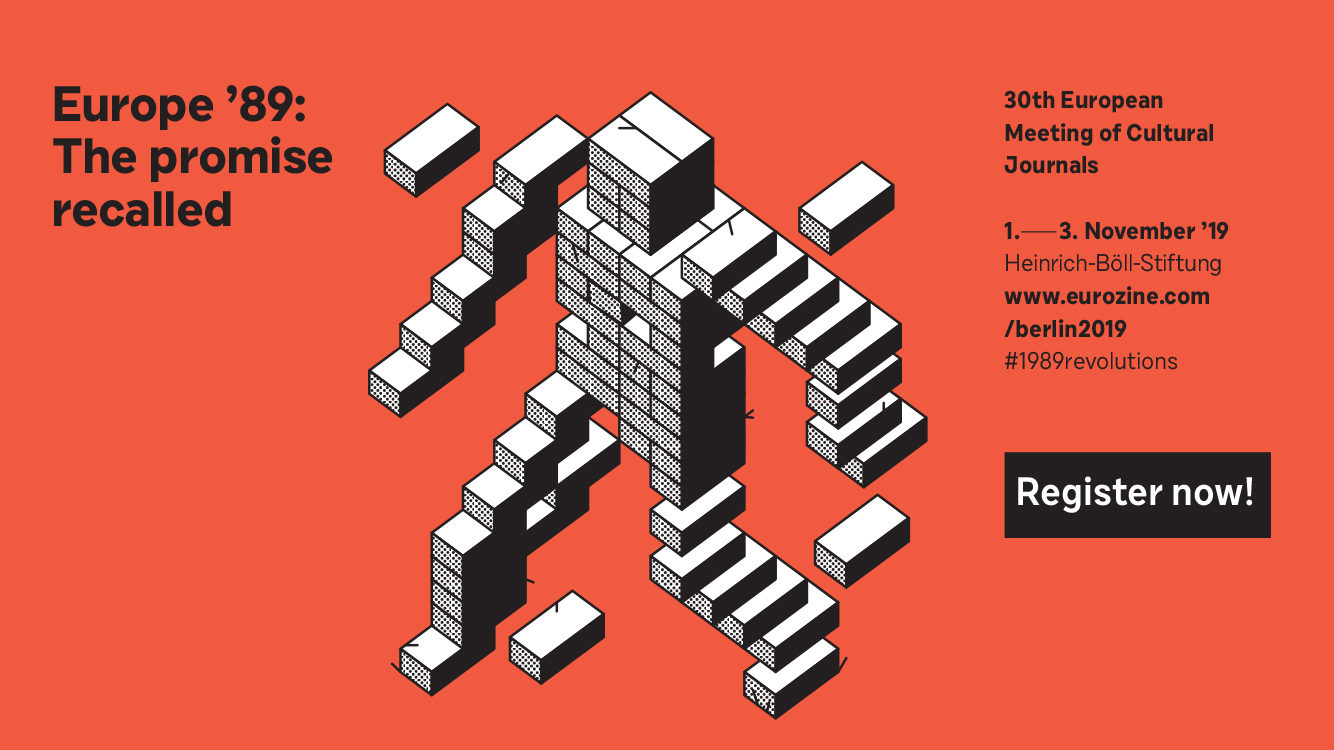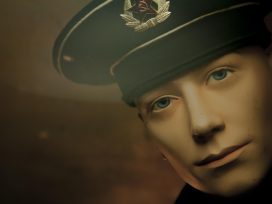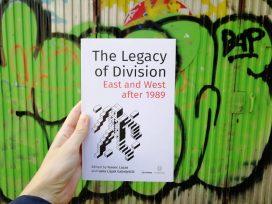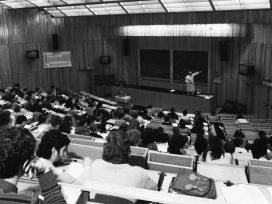In 2011, the feature-film All That I Love was selected as the Polish entry in the Best Foreign Language Film category at the Academy Awards. It failed to win an Oscar, but the story – about love and rock music in 1980s communist Poland – had considerable audience appeal. Even before its nomination, the film had been widely screened in western Europe. However, at one of its earliest showings, viewers repeatedly asked the director, Jacek Borcuch, rather bizarre questions. Finally, it dawned on him that, though otherwise favourably disposed, the audience had mistakenly assumed that the action of the film takes place in contemporary Poland.
Borcuch was shocked. Recreating life in the communist Polish People’s Republic thirty years before, on screen, had proved a considerable logistical challenge. Finding the right locations, interiors and props hadn’t been easy. Yet, as the director later recalled, at least part of the audience – those from the West – had been labouring under the impression that his film about communist Poland was a depiction of life in 2011. Following the incident, Borcuch inserted a freeze frame displaying the year ‘1981’ at the start of the film.
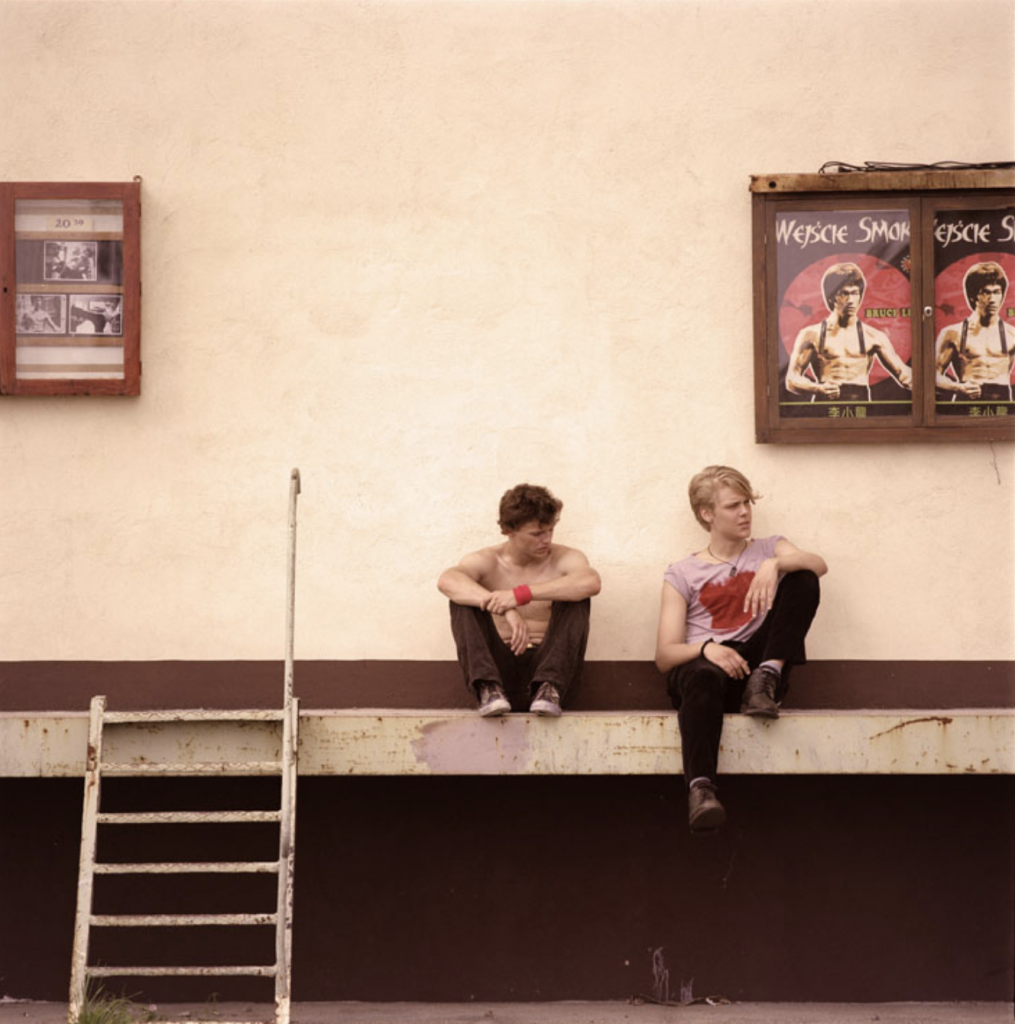
Still from the movie ‘Wszystko, co kocham’ (All That I Love), Poland (2009).
This anecdote dates back several years, but it remains interesting because audiences that come to view foreign art films tend to be quite demanding and well-informed. It is hard not to feel that his experience revealed something important about Europe. The way in which east and central Europe is imagined in the West has changed little – despite regime change and the passage of the years. Experts in international relations or intellectuals with global reputations may disagree here, but my concern lies with the way in which the two halves of Europe imagine one another on a daily basis. Because these perceptions must, in the final analysis, impinge on politics.
A new Iron Curtain?
Roughly a year after Borcuch’s film had been shown in the European Union, the migration crisis of 2015 struck. The Visegrád countries showed strong resistance to the very notion of relocating people, which provoked a combination of confusion and shock in the West. Commentators wrote about a ‘new Iron Curtain’ and it was said that ‘Europe’s pupil was showing signs of resistance’. Many of the political tensions felt in Europe came to be explained through the prism of a conceptual model dating back to the last years of communism and the beginnings of the transition.
Some people took offence at central European countries taking a political position that was in any way different. Others were taken aback by the language politicians were using in response to the migration crisis – a language which did indeed often fall short of diplomatic standards. Yet others were astonished by the deep gulf that had opened up and torn through European solidarity. It was soon being widely said that modernisation in post-communist countries had been superficial, and that people were slipping back into their ‘old ways’ – a term that remained ill-defined.
This is not a view that I share. It seems to me that many of the disagreements we are seeing in Europe today emerge from misleading descriptions of the present situation. Essentially, people have failed to notice that, for some years now, something ‘completely new’ has been appearing on the horizon. In the thirty years of post-communism, the citizens of the Visegrád countries have never been closer or more similar to western Europeans, in terms of their material status or the functioning of state institutions, than they are today. Yet there can be no doubt that something significant has changed in recent years.
This is simply that in the Visegrád countries, the post-communist myth about the West has lost the power to convince. Consequently, insofar as we function within the European Union, we have found ourselves facing entirely new political challenges.
What myth?
Since the 1989 Revolutions, in eastern Europe there has been a dominant, naive and uncritical admiration for countries west of the Elbe and for the US. Poland serves as an excellent illustration of this mindset. The first post-communist prime minister of the Third Polish Republic, Tadeusz Mazowiecki, said in the lower house of parliament in August 1989:
I am certain that Poland can play an important part in the political, economic and cultural life of Europe. However, the unusually difficult economic situation in the country does not encourage optimism. The same is true in the field of international relations. The civilizational gap between Poland and the societies of developed countries is growing.
Consequently, the official task of those who were building the Third Republic became to ‘catch up’ with the West. It was widely believed that the gap between Poland and the West had been the result of the misfortunes that befell the country as a result of the unprovoked German-Soviet attack on the Second Republic in September 1939. Subsequently, following the disaster that the Second World War proved to be for Poland, and against the will of most citizens, the Polish People’s Republic was established. The referendum on this and the following elections were rigged. It was a state dependent on the USSR with Soviet troops on its territory. For the next fifty years, the inhabitants of eastern Europe were separated from the West by an Iron Curtain, censorship and propaganda. Milan Kundera expressed it vividly in the New York Review of Books by referring to a ‘kidnapped West’. The events that followed, which brought an end to the Soviet regime, are well known.
As the Old World shook off the Soviet yoke, the international interest was obvious. In the early 1990s, Paul Berman, a New York liberal intellectual, travelled through the former Eastern Bloc and made what seemed an astonishing discovery. During the course of the anti-communist revolutions, the citizens of east central Europe had developed an undiscriminating passion for American thought and culture, in all its diversity. From Berman’s perspective, this appeared to be a baffling intermingling of the order of things. Nothing matched. Lowbrow pop-culture had merged with heavyweight philosophical ideas about the nature of democracy. It seemed an astonishing combination – not an image of the West as it really was, but a kind of myth.
Observing from Warsaw or Prague, on the other hand, the different elements matched perfectly. Enforced Sovietisation had failed. People imagined that if they wished for it hard enough, they could instantly become the West. If not all together then, at the very least, one at a time. You just had to want it very badly and work hard. In other words, the idea that becoming someone entirely different could be fast-tracked, to good effect, served as a powerful impetus for change.
A passion for catching up
A cultural example might serve to illustrate this. In Poland the passion for ‘catching up where we had fallen behind’ was so intense that, in 1990, cinemas devoted entire weeks to screening nothing but American films. The very existence of Polish cinema was being called into question– even though, not long before, people had taken great pride in the successes of Polish cinema in the 1970s and 1980s.
Today, the transition is often remembered only in terms of the economic decisions taken at the time. It is true that post-communist countries made a decision to shake off poverty and drag themselves out of the consequences of central planning using western economic tools. But it is also worth emphasising that Europeans living behind the Iron Curtain were not motivated exclusively by material concerns. On the contrary, Berman was genuinely surprised that for eastern Europeans, western countries also reflected a better world from the ‘moral’ perspective. Anyone who fails to take account of this may likewise fail to understand what lay behind the beginnings of the Third Polish Republic and of other states in east central Europe.
The post-communist myth about the West motivated the citizens of east central Europe to introduce significant economic, legal and social reforms. It united people almost instinctively, as they had shared the experience of poverty, depression and lack of freedom. There was hardly any need for discussion. It was enough to see any household object or car produced in the United States or western Europe, to feel instantly moved to imitate this other, better world, without any sense of irony.
It’s easy to forget that this uncritical attitude to the West is neither a well-established tradition, nor some kind of ancient cultural norm. On the contrary: in Poland, for example, the tendency to take inspiration from ‘imported’ ideas or solutions has long competed with an urge to close all doors and function in an exclusively Polish cultural context. This has been true since the days of the First Republic. In the eighteenth century, the modernisation that came with the Enlightenment clashed with Sarmatism, the traditional ideology of the Polish nobility. In the nineteenth century many Polish Romantics who contributed to the redefinition of national identity through literature, music or art were highly critical of certain aspects of western civilization. Poland was partitioned between Russia, Prussia and Austria at the time, and until 1918 two of these powers (Prussia and Austria) regarded themselves as western. Lastly, the twentieth century brought a series of disappointments for Poland, in particular the fact that, in 1939, France and the United Kingdom failed to keep any of their obligations as Poland’s military allies, and that the agreements made between Churchill, Roosevelt and Stalin in 1945 effectively handed eastern Europe to the USSR.
It may come as a surprise to people brought up at the end of the Cold War and after that the history of Poland can also be seen in terms of resistance to the West. The words of the Polish poet Cyprian Norwid might serve as a motto for this particular narrative:
Europe is an aging madwoman and a drunkard, who commits massacres and murders every few years, to no civilizational or moral end. She is incapable of constructing anything – thick as a brick, conceited, haughty and light-minded.
According to this view of history, the consequences of the perfidy inflicted on Poland by the West were felt right up to 1989. Yet, after the fall of communism, mistrust of western countries was relegated to the margins of public life for years.
In the early 1990s, the historian and politician Bronislaw Geremek expressed disappointment at the bureaucratic obstructions created by European institutions. Geremek was one of the most pragmatic voices to be heard at the time. Nonetheless, most people tended to share the impression Donald Tusk took away after travelling to the West for the first time. ‘It was sheer delight,’ he said. No surprise, then, that he sought to remember it for the rest of his life.
Until very recently, many of today’s east central European Eurosceptics believed uncritically in the myth of the West. Among the most ardent believers were Viktor Orbán and Jarosław Kaczyński. As a young liberal, Orbán had called for Hungary to be included in the institutional structures of the West. Kaczyński took a similar position and was quite capable of using this to launch attacks on his political adversaries. In 1993 he argued that if his opponents were to pursue more decisive policies ‘we could be a lot further along the road to joining NATO and the EEC.’In 2003, like other mainstream political parties in Poland, Kaczyński’s Law and Justice Party supported the country’s accession to the European Union. For years, Law and Justice politicians argued that although the EU might not be perfect, it offered an antidote to globalisation. While making the case that democracy can function only within a framework of nation states, Kaczyński nevertheless chose to make reference to the German-British liberal academic Ralf Dahrendorf.Law and Justice worked out a political position which Kaczynski reiterated in his pre-election speech in 2015: we must be active participants in the European Union, so that we might be one of the six most important states within it. Many more examples could be cited.
For almost as long as the Third Republic has existed, the ‘better world’ that the West represents to Poles has been largely imagined rather than examined. In a sense, Francis Fukuyama’s celebrated book The End of History and the Last Man – so widely criticized in the West – gave almost perfect expression to the state of mind then experienced by the citizens of eastern Europe. People were not particularly concerned about the strength of Fukuyama’s theoretical framework or its endurance. In the early 1990s, many intellectuals in Warsaw, Prague or Budapest (who may be Eurosceptics today) simply wanted the American author to be right.
Under communism, Juliusz Mieroszewski, a distinguished Polish political analyst living in exile, reminded us that Poland belongs neither to the East nor to the West. But in the wake of what happened in 1989, this was hardly at the forefront of our minds. Instead, we were thinking about how to ‘escape the East’ as quickly as we could, at any cost. The rest – political agendas, economic decisions, military alliances – were simply means to this end. But things move on. New generations have grown up and uncritical delight in all things western has been relegated to history. At a more profound level, some of our compatriots have remembered the obvious: how the West perceived east central Europe in the past, how culturally different it is, and so forth.
Invoking the West to embarrass
For years it had been easy to shame an adversary by saying: ‘What would the West think of that!’ Anyone capable of creating a new perception of the West in Poland could, in theory, win over hearts and minds. It would need to be a vision that was neither post-communist nor mythical, but pragmatic: an image of the West as a natural place for Poland to be. But this does not change the fact that, today, EU supporters in Poland are faced with a task harder than any in the history of the Third Republic so far. Debates on the rule of law in Poland and Hungary abound. Yet for some years now attitudes to the West have been challenged by economists who suggest abandoning imitative innovation in favour of a national model of modernization. Today, thinking tends to be considerably more pragmatic than it used to be. To that extent, the countries of east central Europe are already in the West – because such an approach is most common among western members of the European Union.
But this has occurred only to a limited degree. Nearly three decades have passed since the fall of the Soviet Empire, yet despite the EU flags fluttering from Lisbon to Tallinn, the two halves of Europe have failed to meet in many respects, especially on issues of collective memory and the way society is imagined. In 2003, for example, nearly 80% of Polish voters expressed their support for joining the EU in a nationwide referendum. Not long afterwards, in 2005, two referenda in the Netherlands and France rejected the proposal for a European constitution. Holland voted 61% and France 55% against. In eastern Europe, the simultaneity of these two events was noted with surprise rather than understanding.
The split into a ‘two-speed Europe’ need not necessarily have been a cause for anxiety. On the contrary, some emphasized that as the memory of the Second World War fades and no longer serves as a strong integrating factor, eastern Europe could contribute a new impetus to European integration.It had, after all, only relatively recently emerged from the trauma of communism. Today, we can see that the predictions of that time had little bearing on actual developments.
A pragmatic West
The decline of the western myth was inevitable. Today, the criticism of Brussels by zealous Eurosceptics can be heard with particular clarity, yet many east central Europeans will remember the naivety of the post-communist years with real nostalgia. This isn’t a longing for a lost youth, or an enthusiasm of ‘those who got lucky’, nor fantasy or delusion. It is simply that the 15 years between 1989 and the accession of east central European countries into the European Union were, in spite of everything, an exceptional time for their political culture. In conditions of peace, with no direct threat to life and health, with no fear of intervention by foreign armies, there was virtually universal agreement on one question: that Poland should join NATO and the European Union.
Why the post-communist myth about the West lost its power has not been adequately examined. Those who designed the Third Polish Republic wanted us to become westerners. That is all. Accelerated Europeanisation apart, they had no plan for preparing the community from within. The process seemed to suggest an escape from the national community instead. Yet it is worth considering that there has been a broad consensus on political ends and that, despite disagreement on certain issues, it has proven possible to cooperate. The myth of the West may have exhausted itself, but the memory of the myth remains, eclipsing Polish stereotypes of rebellion, internecine war and the like.
The end of the myth of the East
Post-communist myths have declined on both sides of the former ‘Iron Curtain’. For some years now, we have heard statements from the West implying that peoples of the Visegrád countries are ‘different from us’. Political lessons have been drawn. They include proposals for a ‘two-speed Europe’, ideas for creating a closed eurozone, and even the notion of a ‘smaller’ Europe.
One could therefore raise questions about the disappearance of the other half of the post-communist myth: the myth of the East. Not only the West, but also east central Europe was mythologized, as was the entire Eastern Bloc. As the minds of eastern Europeans were overflowing with pop cultural references that helped shape the myth of the West, western Europeans and Americans had created a comparable fantasy. Since I started my argument with a film, let me conclude with another.
The Russia House was made in 1990. Based on a novel by John Le Carré, it depicted ordinary people, ‘good’ people, finding common ground while working ‘alongside’ evil politicians and insidious representatives of the secret services. The heroes, played by Sean Connery and Michelle Pfeiffer, fall in love. Post-Cold War rapprochement is depicted as a ‘hot peace’.
The film is full of clichés, but it made a serious point. During the Cold War and the 1989 Revolutions, a widespread perception suggested that ‘the people’ were ‘good’ and ‘the regime’ was ‘bad.’ This popularized version of Rousseau’s worldview allowed for a simplistic separation of victims from their persecutors. It encouraged solidarity with the downtrodden that transcended borders and regimes. And it enabled people to entertain the hope that, at some unspecified time in the future, once the corrupt communist system had fallen, the volonté générale would prevail. And this, by definition, would be good. The historical injustices of the twentieth century would be rectified. The post-communist expansion of the European Union was based not solely on striving for economic growth. It was also rooted in myths like this.
Despite platitudes about the triumph of liberalism in 1989, this narrative did not offer a particularly liberal way of seeing things. It focussed attention on large collectivities such as nations or peoples, instead of individuals and their achievements. In the West, simplification, ignorance and political sentimentalism gave way to an increased awareness of the corruption in communist societies. Eastern Europeans found themselves facing rejection instead of the acknowledgement that post-communist societies are as complex as any other human community.
The wane of the West’s fascination with the return to the fold of ‘the other Europe’ was followed by new political proposals. Intellectuals once delighted by the fall of communism are now proposing that the European Union be reduced. They suggest, for example, that a new union of 10 to 12 countries be formed, and that it could rival China or the US. Unfortunately, this is a kind argumentation is most prone to feed the populist agenda in the first instance, and may prepare the ground for further divisions, if not disintegration of the EU.
Myths are what they are, and time will tell if they are important. Whether old stories are replaced by new myths about some kind of essential difference between the two Europes remains an open question. Alternatively, we may continue to build a European Union founded on shared solidarity and greater self-knowledge, even as we face challenges that are bound to be very different from those a quarter of a century ago. If the populists of the Old World can be said to have achieved anything at all, it is that they have forced everyone to open a genuine, pan-European debate on this issue.


